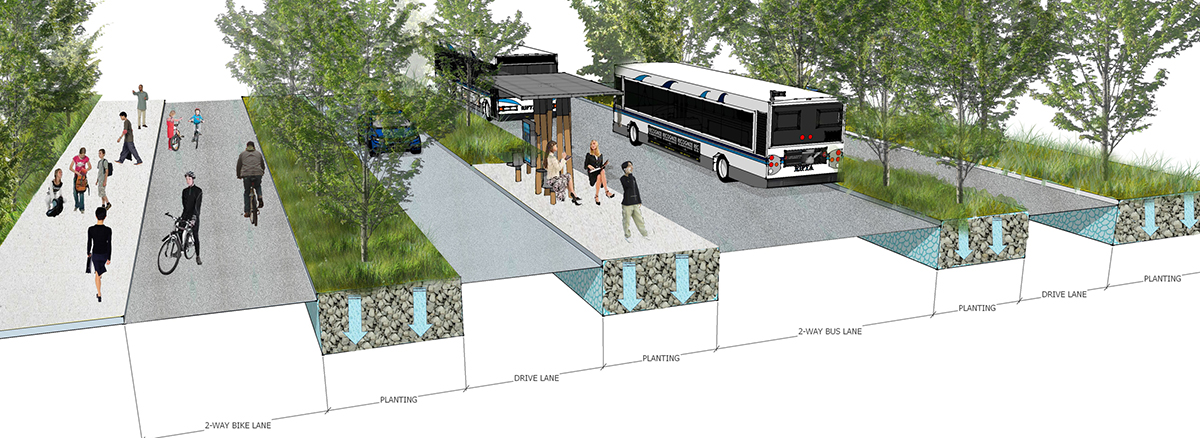
James Kennedy is part of the group Moving Together Providence. You can follow him on Twitter at @transportpvd.[/alert]
RIDOT has dubbed its proposal for a 6/10 Connector Big Dig a “highway-boulevard hybrid”, but the 6/10 Dig is sharply at odds with the Moving Together Providence proposal for a genuine 6/10 Boulevard. Like the “cooler and warmer” scandal that has captured the public’s attention and revulsion, highway-boulevard hybrid is state-government-speak for nonsense. But the mistakes embedded in RIDOT’s 6/10 approach are orders of magnitude more expensive than the $4.5 million Reykjavik excursion, and its failure will stay with us for decades.
It’s pretty obvious why the 6/10 Connector has segregated Silver Lake, Olneyville, and the West End from each other, and not hard to understand how it made Providence’s “second downtown” its poorest neighborhood. Less obvious, but vital, is for suburbanites to understand how RIDOT’s policy fails them, and to join in a statewide movement for a genuine boulevard.
Urban highways funnel traffic and collect it into a few chokepoints, instead of allowing it to disperse naturally. Olneyville has next to no job centers that would draw outsiders, and the neighborhood itself is almost 50% car-free. But 11:30 on a Wednesday in Olneyville Square feels like let-out time for the Newport Jazz Festival. How can a place with so little economic activity and driving be so congested?
The answer is the Connector itself, that might as well be called the Disconnector. While in theory it speeds up traffic along its corridor, its limited-access ramp system also cuts off the smaller streets that could grid together traffic. That means that local and through traffic is pushed together, and since traffic is non-linear in nature, even a smaller push in that direction can be the tipping point that stops everything. Of course, in addition, the Connector itself also becomes congested at rush hours, when it’s actually needed, and fails commuters trying to somewhere quickly.
Imagine the urban highway approach applied to one of the state’s most job-heavy neighborhoods: the East Side. There’s no doubt that affluent university staff are able to afford cars and often drive to work. Yet the traffic is absorbed in a grid of mostly small, two-lane streets. Between Main and Butler, fifteen two lane streets add up to thirty lanes of traffic. East Providence commuters might cheer an Angell Street Expressway if RIDOT proposed one, but they would find over time that the proposal would make their commute worse. The RIDOT 6/10 approach, if brought to Angell Street, would tie up traffic by blocking that grid with a limited-access freeway. It would also require sacrificing our most productive places for additional on- and off-ramp space. The disaster it would create would seem to justify the expense, as people who sat in the new traffic would never grasp that the highway itself caused their misery. The reason this tragedy never befell the East Side was because its residents were well enough connected to fight it, but Olneyville too deserves fair treatment.
Doesn’t decking the highway make things nicer? Yes, but only in a very limited location, and at very great expense. It precludes improving the whole corridor, and puts us on the hook for long-term debt, without the benefits of development or traffic mitigation.
A surface boulevard– not 6/10 Dig, but the Moving Together community vision–allows bridges to be shortened to cross just the Amtrak corridor, allowing for more numerous bridge connections to re-weave the grid. In opens up 70 acres of development that the RIDOT plan leaves tied up in on- and off-ramps. It prevents the state from needing to deck a highway, which would be an expensive liability. A boulevard will reawaken our city just as Waterplace Park did, but by lowering rather than adding costs.
We call on Gov. Raimondo to trash the RIDOT highway-boulevard “hybrid” and build a real boulevard, before 6/10 Dig becomes the next Icelandic embarrassment. 6/10 Dig doesn’t create the warmth of community, and it’s certainly not cool.

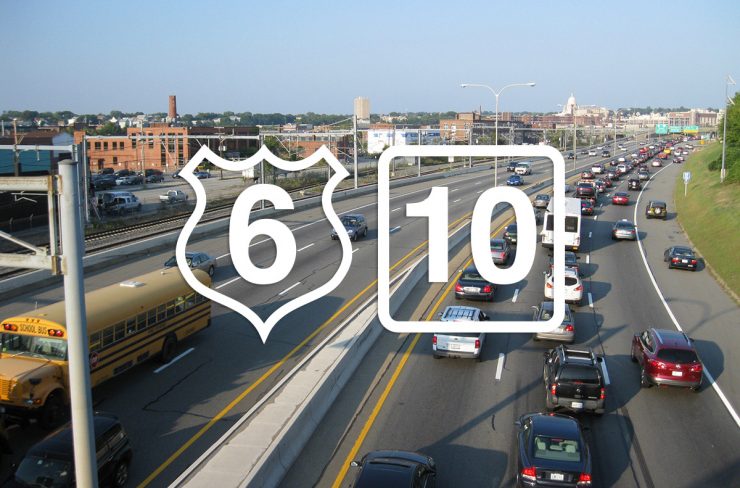
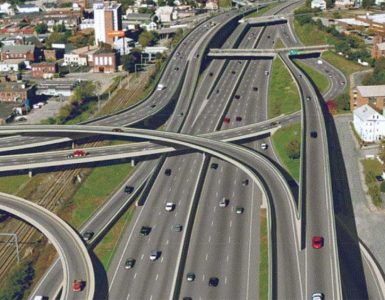
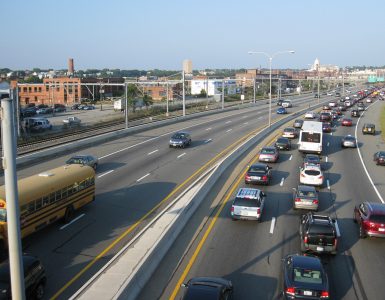
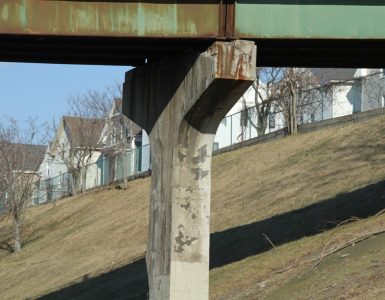

Maybe I’m just being stupid here, but I can’t possibly imagine how a straight up boulevard with cross streets could move north/south commuter traffic through the area as fast as a highway or the boulevard/tunnel hybrid. I live in the city and commute south via Route 10 daily. The backups I see through Olneyville are largely caused by the lack of a 10 north to 6 West connection, which I’m fairly certain the Hybrid plan addresses while maintaining the highway for traffic traveling North to 95. I understand the fear of cost over runs with the hybrid approach, but from a purely functional standpoint it seems like the best of both worlds. My biggest fear with a Boulevard-only approach is that it would keep people from using 6/10 as an alternate to the S curves, dramatically increasing traffic on 95 through the city. It functions very well as a “relief valve” handling excess capacity during morning and evening commute.
Thanks for the article–I was a little unclear on the differences between the boulevard proposal and the RIDOT plan, but this makes clear just how far short the latter falls from truly serving the surrounding communities.
Liam,
Think of it this way: if we said ‘let’s build twenty new lanes of traffic,’ everyone would cheer. But that’s what building ten small street connections would be equal to.
I stayed away from transit and bike arguments in the Projo because I was trying to know my audience, but the transit piece of the RIDOT plan also doesn’t make sense. No one is going to develop next to (or inside of) on- and off-ramps, much less do so in a transit-friendly (i.e., walkable) way. The RIDOT plan also has the additional cost of skyway bridges that will cost more money, but will be a no-go zone at night. Have you ever had to cross a creepy skyway bridge at night? It’s also going to require elevators in order to make those skyways ADA accessible, whereas in our plan you could just walk across the street.
The busway can carry more than the full capacity of the entire highway on its own, but it won’t do so if it’s poorly designed. And if it doesn’t have ridership, frequencies will be hard to justify, and future transit spending will also be hard to politically convince people of. It’s important that we do this right.
Another anecdote: nearly everyone I know travels intra-city using highways, which to me is crazy. I grew up in the suburb of Upper Darby (kind of the Pawtucket of Philadelphia) and there was no limited access highway to Philly. The closest was the Schuylkill Expressway, many miles into the city. The so-called ‘Upper Darby’ exit of the Blue Route was two towns over. Using the highway to me is about long-distance or at least regional trips. But here we have people going from the West Side to the East Side via two highways. And that’s where the traffic comes from. Because, as I said, traffic is nonlinear, just a little push in that direction causes traffic to back up.
The boulevard plan also opens up Harris Ave to two-way traffic, which is another huge advantage that costs very little. There’s really no need for a highway.
James – I totally understand the idea of many small streets being able to handle a larger than expected volume of traffic, but in this application you are tying together 3 highways. You don’t think that bringing traffic from highway speed to 25mph and then getting everyone back up to highway speed is going to cause bottlenecks and backup? What about the psychological affect – Will people really want to slow down and navigate through a neighborhood to get to the next highway or will they just stick with 95 through the city? I really do like the Boulevard idea from a neighborhood perspective, but I can’t see it not dramatically adding volume to 95 while doing nothing to improve the way traffic flows between 6 & 10. And while it bridges some of the gap between the west end/ Federal Hill & Olneyville, without burying the trains you will always have a barrier there. I’m not against the Boulevard idea, and I love the idea that it could be a lot cheaper, but the idea that it would not impede traffic flow is a real tough sell.
Traffic on the 6/10 connector currently goes from highway spped to 25 mph (or less) where it ties in to I-95 (via a winding ramp network) and Memorial Boulevard (via a traffic signal). It effectively hits a brick wall – this causes mega-bottlenecks today. Traffic would move much more efficiently along a boulevard where it can be metered by signals and fed into the Civic Center mess at a manageable rate. And Route 10 doesn’t make sense as a bypass for the Thurbers Avenue curve and downtown, because the merge/weave where it rejoins I-95 northbound is what controls capacity on the viaduct and causes backups through downtown. If that traffic just stays on I-95, or better yet, uses I-295, I-95 through downtown flows better. Similarly southbound, where the weave between 146 and the 6/10 connector controls capacity and causes backups into Pawtucket during peak periods.
True, the Northeast Corridor would still be a barrier between the West Side and Olneyville, but a 100 foot long bridge over the railroad makes for a better pedestrian connection than a 300 foot long bridge over the railroad and a highway. I could see another east-west bridge in the vicinity of the Tobey Street overpass. And with an at-grade roadway next to the railroad, I could see development on air rights over the Northeast Corridor in the future – much as I hate to reference the man, look at the Trump development along Riverside Boulevard in Manhattan as an example.
Liam,
The idea I have is to put a boulevard from the Providence Place Mall to Cranston Street (ish), that would mean there’d be a highway coming from Johnston and ending, and a highway or parkway coming from Cranston and ending, but no third highway. We think a boulevard all the way to Cranston could work too, but there are reasons to hold back on that proposal (there are a lot of properties adjacent to Rt. 10 that make newly connected streets less viable, and there’s also less congestion on that part of the road. Making 6 East a boulevard kind of takes advantage of the fact that that part of the road isn’t very fast in practice anyway, whereas 10 actually functions at a fairly high speed much of the time).
I think traffic circles would work to make the transition. A model I’ve seen for this is the transition between the Ben Franklin Parkway (a boulevard) and Kelly Drive (a faster road, which is more like a parkway-style highway). They connect at Eakin’s Oval, and then the BF Parkway further slows down at Logan Circle).
I think in practice the boulevard would move traffic more quickly, though at a lower peak speed.